

Our Courses


Computer Vision with Embedded Machine Learning
Computer vision (CV) is a fascinating field of study that attempts to automate the process of assigning meaning to digital images or videos. In other words, we are helping computers see and understand the world around us!
-
Course by

-
 Self Paced
Self Paced
-
 31 hours
31 hours
-
 English
English

Intermediate Intel® Distribution of OpenVINO™ toolkit for Deep Learning Applications
This course is designed for application developers who wants to deploy computer vision inference workloads using the Intel® Distribution of OpenVINOTM toolkit. The course looks at computer vision neural network models from a variety of popular machine learning frameworks and covers writing a portable application capable of deploying inference on a range of compute devices.
-
Course by

-
 Self Paced
Self Paced
-
 English
English

Artificial Intelligence on Microsoft Azure
Whether you're just beginning to work with Artificial Intelligence (AI) or you already have AI experience and are new to Microsoft Azure, this course provides you with everything you need to get started.
-
Course by

-
 Self Paced
Self Paced
-
 4 hours
4 hours
-
 English
English
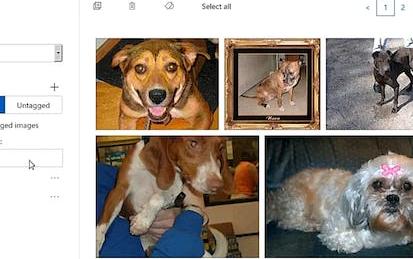
AutoML for Computer Vision with Microsoft Custom Vision
Welcome to this hands-on project on using Microsoft's Custom Vision service for automated machine learning or AutoML as it's popularly known.
-
Course by

-
 Self Paced
Self Paced
-
 2 hours
2 hours
-
 English
English

Object Localization with TensorFlow
Welcome to this 2 hour long guided project on creating and training an Object Localization model with TensorFlow. In this guided project, we are going to use TensorFlow's Keras API to create a convolutional neural network which will be trained to classify as well as localize emojis in images. Localization, in this context, means the position of the emojis in the images. This means that the network will have one input and two outputs. Think of this task as a simpler version of Object Detection.
-
Course by

-
 Self Paced
Self Paced
-
 3 hours
3 hours
-
 English
English
Recognizing Shapes in Images with OpenCV
In this 1.5 hour long project-based course, you will apply computer vision techniques to process images, extract useful features and detect shapes using Hough transforms.
-
Course by

-
 Self Paced
Self Paced
-
 3 hours
3 hours
-
 English
English

Camera and Imaging
This course covers the fundamentals of imaging – the creation of an image that is ready for consumption or processing by a human or a machine. Imaging has a long history, spanning several centuries. But the advances made in the last three decades have revolutionized the camera and dramatically improved the robustness and accuracy of computer vision systems. We describe the fundamentals of imaging, as well as recent innovations in imaging that have had a profound impact on computer vision. This course starts with examining how an image is formed using a lens camera.
-
Course by

-
 Self Paced
Self Paced
-
 17 hours
17 hours
-
 English
English

AI and Disaster Management
In this course, you will be introduced to the four phases of the disaster management cycle; mitigation, preparation, response, and recovery. You’ll work through two case studies in this course. In the first, you will use computer vision to analyze satellite imagery from Hurricane Harvey in 2017 to identify damage in affected areas. In the second, you will use natural language processing techniques to explore trends in aid requests in the aftermath of the 2010 earthquake in Haiti.
-
Course by

-
 Self Paced
Self Paced
-
 12 hours
12 hours
-
 English
English

Deep Learning Applications for Computer Vision
In this course, you’ll be learning about Computer Vision as a field of study and research. First we’ll be exploring several Computer Vision tasks and suggested approaches, from the classic Computer Vision perspective. Then we’ll introduce Deep Learning methods and apply them to some of the same problems. We will analyze the results and discuss advantages and drawbacks of both types of methods. We'll use tutorials to let you explore hands-on some of the modern machine learning tools and software libraries.
-
Course by

-
 Self Paced
Self Paced
-
 23 hours
23 hours
-
 English
English

Computer Vision - Image Basics with OpenCV and Python
In this 1-hour long project-based course, you will learn how to do Computer Vision on images with OpenCV and Python using Jupyter Notebook.
-
Course by

-
 Self Paced
Self Paced
-
 2 hours
2 hours
-
 English
English

Introduction to Intel® Distribution of OpenVINO™ toolkit for Computer Vision Applications
Welcome to the Introduction to Intel® Distribution of OpenVINO™ toolkit for Computer Vision Applications course!
This course provides easy access to the fundamental concepts of the Intel Distribution of OpenVINO toolkit. Throughout this course, you will be introduced to demos, showcasing the capabilities of this toolkit.
With the skills you acquire from this course, you will be able to describe the value of tools and utilities provided in the Intel Distribution of OpenVINO toolkit, such as the model downloader, model optimizer and inference engine.
Who this class is for:
-
Course by

-
 Self Paced
Self Paced
-
 English
English

Computer Vision for Engineering and Science
Cameras are an integral component in many new technologies. Autonomous systems use cameras to navigate their environment, while doctors use small cameras to help guide minimally invasive surgical techniques. It is essential that engineers use computer vision techniques to extract information from these types of images and videos. In this specialization, you’ll gain the computer vision skills underpinning many of today’s top jobs.
-
Course by

-
 Self Paced
Self Paced
-
 English
English

Computer Vision and Image Processing Fundamentals
Learn about computer vision, one of the most exciting fields in machine learning. artificial intelligence and computer science.
-
Course by

-
 Self Paced
Self Paced
-
 10
10
-
 English
English

TensorFlow: Advanced Techniques
About TensorFlow TensorFlow is an end-to-end open-source platform for machine learning. It has a comprehensive, flexible ecosystem of tools, libraries, and community resources that lets researchers push the state-of-the-art in ML, and developers easily build and deploy ML-powered applications. TensorFlow is commonly used for machine learning applications such as voice recognition and detection, Google Translate, image recognition, and natural language processing. About this Specialization Expand your knowledge of the Functional API and build exotic non-sequential model types.
-
Course by

-
 Self Paced
Self Paced
-
 English
English
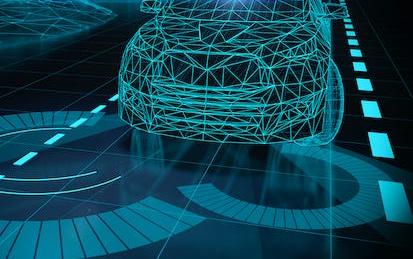
Computer Vision Basics
By the end of this course, learners will understand what computer vision is, as well as its mission of making computers see and interpret the world as humans do, by learning core concepts of the field and receiving an introduction to human vision capabilities. They are equipped to identify some key application areas of computer vision and understand the digital imaging process. The course covers crucial elements that enable computer vision: digital signal processing, neuroscience and artificial intelligence.
-
Course by

-
 13 hours
13 hours
-
 English
English
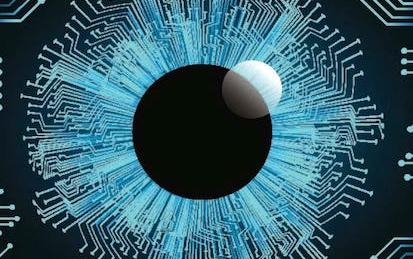
First Principles of Computer Vision
Welcome to the First Principles of Computer Vision website - https://fpcv.cs.columbia.edu/about. This website serves as a supplementary resource to this specialization. Here, you will find additional information about the faculty team, ongoing research, and the academic resources for this specialization. What you can explore: ● About: Learn more about the faculty and staff behind the specialization. ● Research: The Columbia Imaging and Vision Laboratory (CAVE) at Columbia University is dedicated to the development of advanced vision systems.
-
Course by

-
 Self Paced
Self Paced
-
 English
English

Introduction to Artificial Intelligence (AI)
Artificial Intelligence (AI) is all around us, seamlessly integrated into our daily lives and work. Enroll in this course to understand the key AI terminology and applications and launch your AI career or transform your existing one. This course covers core AI concepts, including deep learning, machine learning, and neural networks. You’ll examine generative AI models, including large language models (LLMs) and their capabilities.
-
Course by

-
 Self Paced
Self Paced
-
 9 hours
9 hours
-
 English
English
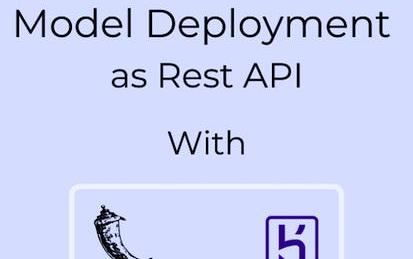
Deploying a Pytorch Computer Vision Model API to Heroku
Welcome to the “Deploying a Pytorch Computer Vision Model API to Heroku” guided project. Computer vision is one of the prominent fields of AI with numerous applications in the real world including self-driving cars, image recognition, and object tracking, among others. The ability to make models available for real-world use is an essential skill anyone interested in AI engineering should have especially for computer vision and this is why this project exists. In this project, we will deploy a Flask REST API using one of Pytorch's pre-trained computer vision image classification models.
-
Course by

-
 Self Paced
Self Paced
-
 3 hours
3 hours
-
 English
English

Introduction to Computer Vision
Introduction to Computer Vision guides learners through the essential algorithms and methods to help computers 'see' and interpret visual data. You will first learn the core concepts and techniques that have been traditionally used to analyze images. Then, you will learn modern deep learning methods, such as neural networks and specific models designed for image recognition, and how it can be used to perform more complex tasks like object detection and image segmentation.
-
Course by

-
 Self Paced
Self Paced
-
 8 hours
8 hours
-
 English
English

Introduction to Computer Vision with TensorFlow
This is a self-paced lab that takes place in the Google Cloud console. In this lab you create a computer vision model that can recognize items of clothing and then explore what affects the training model.
-
Course by

-
 Self Paced
Self Paced
-
 1 hour
1 hour
-
 English
English

How Computer Vision Works
This series of short videos and accompanying in-classroom lessons will introduce you and your students to how artificial intelligence works and why it matters. You can choose individual lessons based on topic, explore the whole series of topics in one class or teach all 7 lessons to give a deeper dive. Join our movement and register at https://studio.code.org/users/sign_in and learn more at https://code.org/ai/how-ai-works and at https://studio.code.org/courses
-
Course by

-
 7 min
7 min
-
 English
English

Machine Learning for Computer Vision
In the second course of the Computer Vision for Engineering and Science specialization, you will perform two of the most common computer vision tasks: classifying images and detecting objects. You will apply the entire machine learning workflow, from preparing your data to evaluating your results.
-
Course by

-
 Self Paced
Self Paced
-
 12 hours
12 hours
-
 English
English
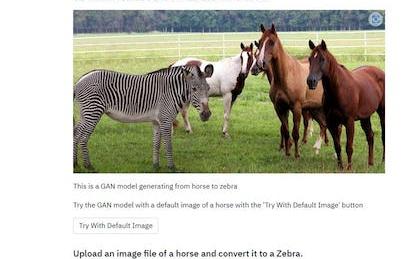
Building a Keras Horse Zebra CycleGAN Webapp with Streamlit
Welcome to the “Building a Keras Horse Zebra CycleGAN Webapp with Streamlit” guided project. In this project, we will build a Streamlit web app of a keras trained computer vision CycleGAN for horse images to zebra and vice versa. This project will take a jpg image of a horse and transform it into a zebra and take a picture of a zebra and transform it to a horse. This project is an intermediate python project for anyone interested in learning about how to productionize computer vision models or more specifically a beginner GAN model with Streamlit and Python.
-
Course by

-
 Self Paced
Self Paced
-
 1 hour
1 hour
-
 English
English

Developing AI Applications on Azure
This course introduces the concepts of Artificial Intelligence and Machine learning. We'll discuss machine learning types and tasks, and machine learning algorithms. You'll explore Python as a popular programming language for machine learning solutions, including using some scientific ecosystem packages which will help you implement machine learning. Next, this course introduces the machine learning tools available in Microsoft Azure. We'll review standardized approaches to data analytics and you'll receive specific guidance on Microsoft's Team Data Science Approach.
-
Course by

-
 Self Paced
Self Paced
-
 16 hours
16 hours
-
 English
English



